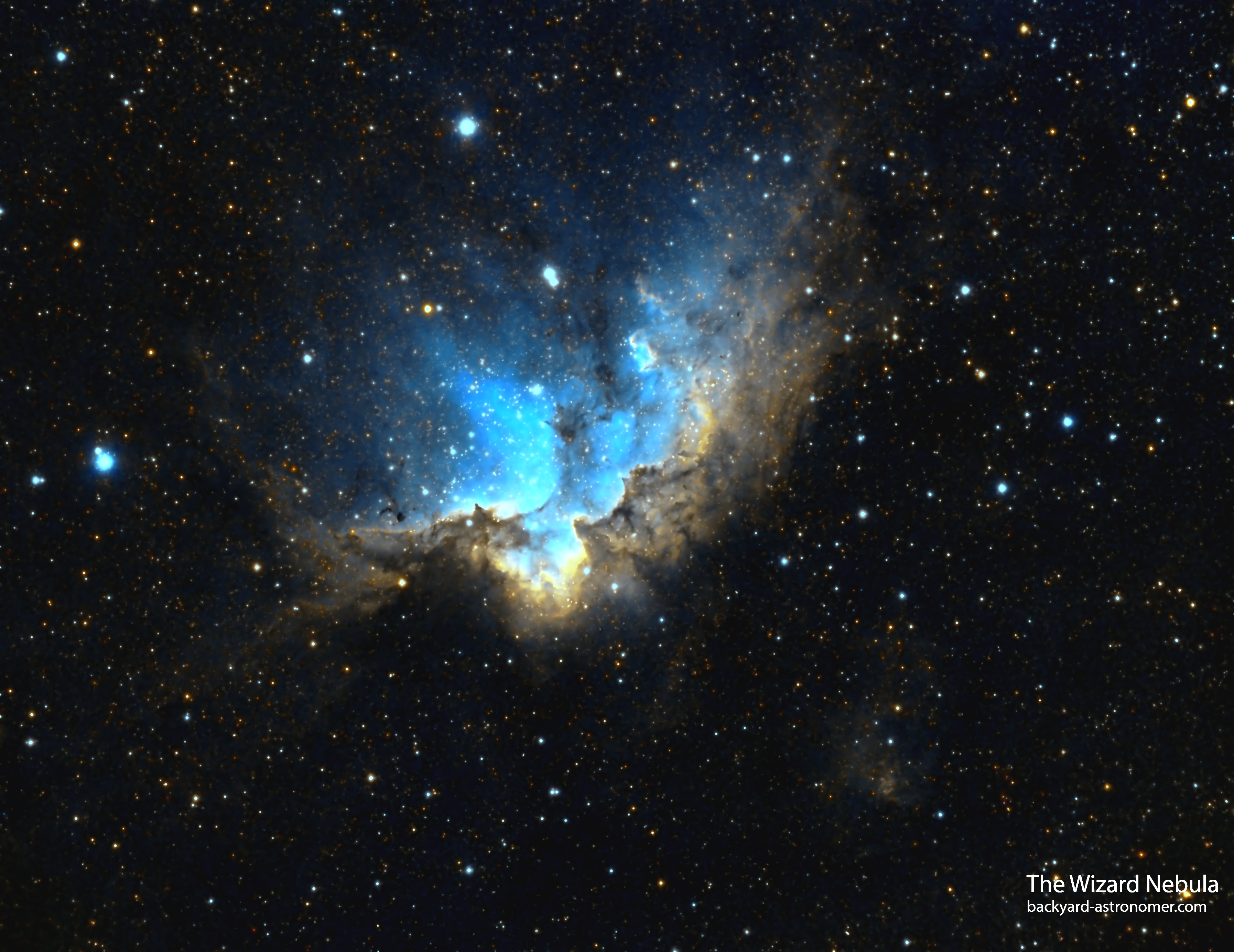Wizard Nebula

- Published on

Summary of the Wizard Nebula (NGC 7380): The Wizard Nebula, designated as NGC 7380, is a captivating emission nebula located in the constellation Cepheus. Its intricate structures and vibrant colors are formed by ionized hydrogen gas excited by the radiation of nearby young stars. The nebula's appearance, resembling a sorcerer or wizard, has earned it the popular nickname "Wizard Nebula." NGC 7380 serves as a fascinating subject for astronomical study and astrophotography, showcasing the ongoing processes of star formation and interstellar gas dynamics.
Discovery and Early Observations: The Wizard Nebula was first observed and cataloged by astronomers during the 18th and 19th centuries. Early observers noted its distinct shape and emission characteristics, contributing to its designation as NGC 7380 in various astronomical catalogs.
Astronomical Contributions: Throughout history, astronomers and observers have contributed to our understanding of the Wizard Nebula and its place in the cosmic landscape. Their observations, sketches, and cataloging efforts have provided insights into the nebula's morphology, composition, and dynamic processes, enriching our knowledge of stellar nurseries and interstellar environments.
Photographic Era: The development of astronomical photography in the late 19th and early 20th centuries revolutionized our ability to study and image objects like the Wizard Nebula. Photographic plates and later digital imaging technologies captured the nebula's intricate details, revealing the distribution of ionized gas, dust lanes, and young star clusters within NGC 7380.
Telescopic Observations: Telescopic observations of the Wizard Nebula across different wavelengths, including hydrogen-alpha and oxygen-III filters, provided additional insights into its ionization state, chemical composition, and the presence of young stellar clusters. These observations have helped astronomers unravel the complex processes of star formation and the interplay between massive stars and their surrounding nebular environments.
My Observation Experience: Capturing the Wizard Nebula firsthand was a captivating experience that required precise equipment and a deep passion for astrophotography. Utilizing the 127mm triplet Explore Scientific telescope and ZWO ASI 1600 Monochrome camera with specialized narrowband filters, I embarked on capturing the vibrant colors, intricate structures, and dynamic star-forming regions of NGC 7380.
Equipment Used: The astrophotography setup included the 127mm triplet Explore Scientific telescope, renowned for its sharp imaging and detailed resolution. Paired with this telescope was the ZWO ASI 1600 Monochrome camera equipped with narrowband filters optimized for capturing the emissions from ionized hydrogen and oxygen in the Wizard Nebula.
Exposure Settings and Processing: Meticulous planning of exposure settings, including exposure time, ISO sensitivity, and temperature control, ensured optimal data acquisition for capturing the Wizard Nebula. Advanced processing techniques using PixInsight software allowed for calibration, alignment, and enhancement of multiple exposures to reveal the intricate details, vibrant colors, and dynamic structures of NGC 7380 in exquisite detail.
Interpretation and Artistry: Beyond its scientific value, astrophotography of the Wizard Nebula allows for artistic interpretation, showcasing the beauty and complexity of cosmic nebulae. Skilled processing techniques and artistic vision transform raw data into a visually stunning image that conveys both scientific detail and aesthetic appeal, inviting viewers to explore the wonders of stellar nurseries and the ongoing processes of cosmic evolution.